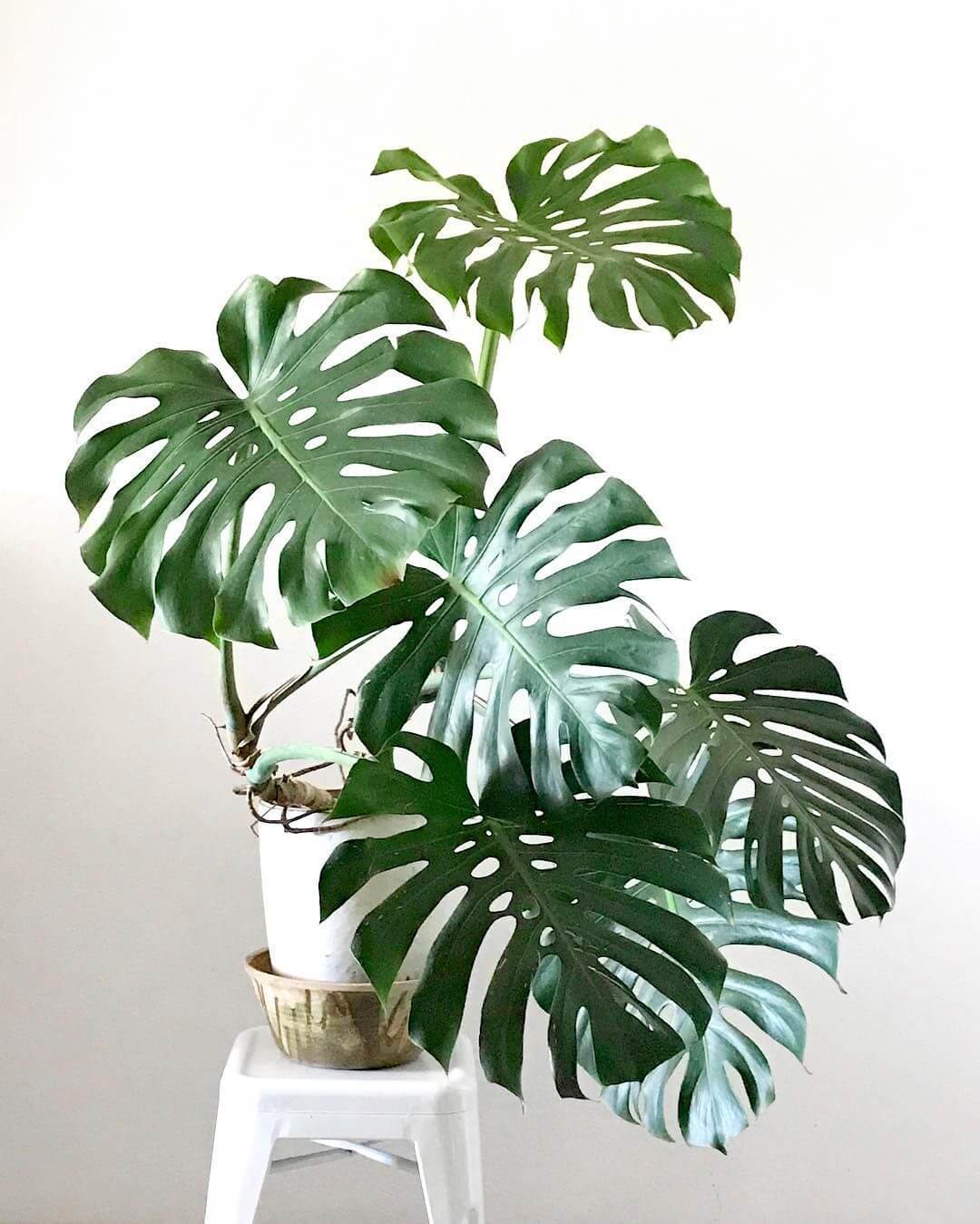It’s no big secret that houseplants are trendy these days- and for good reason. They soften indoor places, improve indoor air quality and studies have shown that plants make people happy. Yes, tabletop or desktop houseplants are cute, but an oversized houseplant makes a big statement. Houseplants in the XL category often begin as a cute little thing, but given time and care, grow into large specimens. Big houseplants are an excellent addition to big spaces in businesses, homes, schools, or commercial buildings. The care required includes ample light, routine maintenance, and space, of course!
Some of our favorite big plants include:
Norfolk Island Pine Auraucaria heterophylla: These evergreens are native to the South Pacific- Norfolk Island to be exact. They like direct, bright light, consistent humidity and will be long-lived indoors given time and space. These are popular living Christmas trees and are often sold in small sizes around the holidays. It’s important to note that even though the ‘pine’ is part of the name, it is not at all cold hardy and should not be kept outdoors in this climate.
Ficus -Ficus benjamina : This is a very popular indoor tree. Glossy green leaves are pretty but also very effective at removing indoor toxins. Ficus are sensitive to drafts so keeping them in a spot away from heating vents, doors and fireplaces are important. They can handle a little direct sun, but prefer bright, indirect light. Usually grows 6-8 feet indoors.
Fiddleleaf- Ficus lyrate: The striking shape of the foliage make these trendy houseplants a real showpiece. They need the same care as the ficus mentioned above, but with extra humidity to keep leaf tips from browning.
Monstera- Monstera deliciosa: Also known as a swiss cheese plant, this is an easy to grow super trendy plant. It prefers bright indirect light and normal-high humidity. Monstera leaves grow bigger with maturity and the plant can grow 3-10 feet tall indoors. Fun fact: the fruit of monstera is edible!
Dracena- dracaena species: Dracena are another easy to grow, widely available indoor plant. Colorful, strap-like foliage add beauty and interest to indoor spaces. There are many species available, with the biggest growing 6 to 10 feet tall.
Caring for Big Plants: Growing big plants indoors isn’t any more difficult than their smaller counterparts. Bright light is probably the most important thing to keep plants from getting leggy and unattractive. Although some direct sunlight can be tolerated, most prefer a bright room with several windows (keeping curtains and blinds open during the day). As most indoor plants hail from the tropics, providing additional humidity in our dry climate can be challenging. Lack of humidity is often the cause for brown leaf edges and tips. Daily misting is helpful as is grouping plants together to make a mini humid micro-climate. A room humidifier in the winter months can be very beneficial. Routine water and fertilizer during the time of active growth (March-October) and then a drier rest period during the dormant period works well.



